Proteomics: Get hair loss without worry!
Hair loss is an epidemic that is currently very difficult to cure effectively. Recent studies have confirmed that early secretion of protein from dermal papilla cells can induce hair production. Xiaobian is here today to share an article on the key cell secretory proteins that induce hair regeneration by means of proteomics research.
iTRAQ-Based Quantitative Proteomic Comparison of Early- and Late-Passage Human Dermal Papilla Cell Secretome in Relation toInducing Hair Follicle Regeneration
PLOS ONE , doi:10.1371/journal.pone.0167474.g008
Sample source
Early and late secreted proteins of dermal papilla cells (DPC).
Technical route
iTRAQ proteomics technology and targeted MRM proteomics technology.
Research result
The authors first confirmed that DPC early secreted proteins can indeed induce hair regeneration. DPC early secreted proteins and late secreted proteins were injected into hairless mice, respectively. It was found that early DPC secreted proteins could induce hair regeneration and late secretion. The protein does not induce hair production (Figure A below); at the same time, early DPC secreted proteins can be induced by skin tissue sections to induce hair follicle structure (Fig. B below).
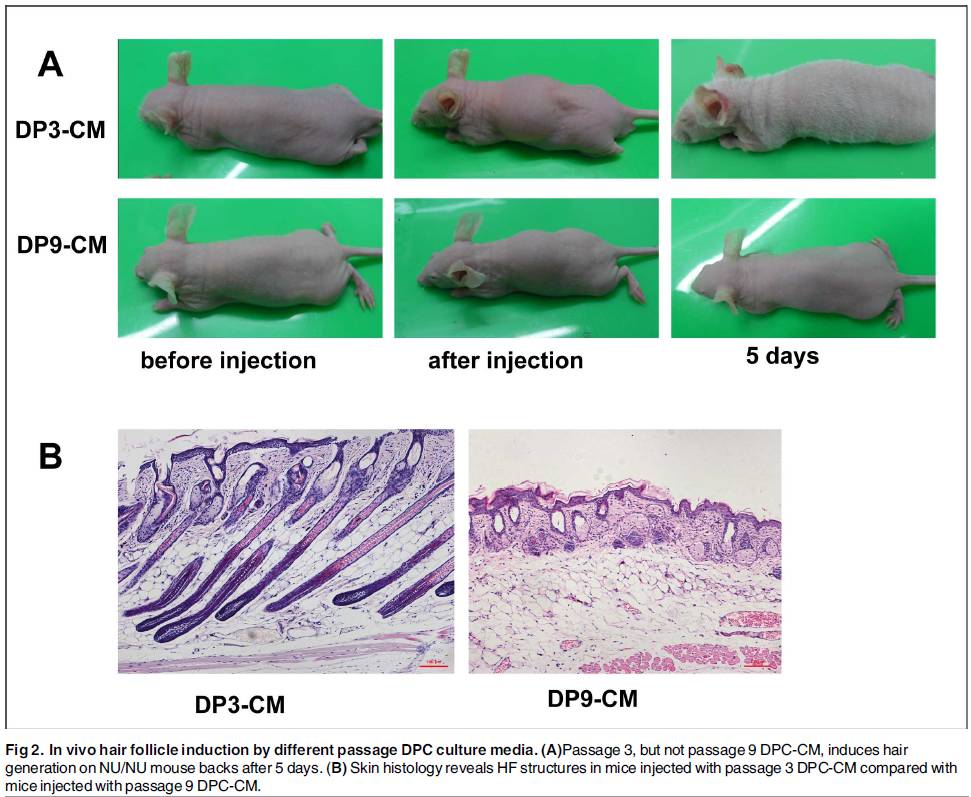
Identification of DPC secreted proteins and differences in early and late secreted proteins : The authors identified 1360 proteins (FDR<1%) from early DPC secreted and late proteins by iTRAQ proteomics (at 20 levels). Through the GO function annotation, most of the identified proteins were secreted proteins (below); a total of 213 differential proteins were found by differential comparison analysis (difference multiple > 1.2, p-values ​​< 0.05), among which early secreted proteins were used. There are 125 downgrades and 88 up.
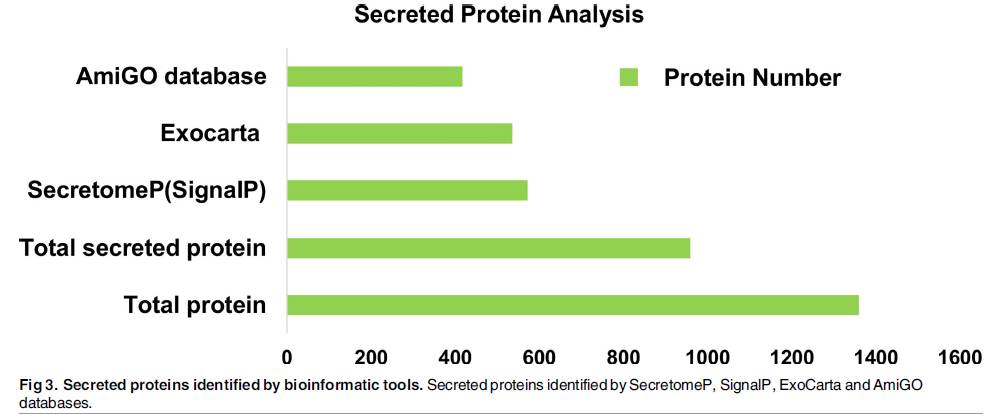
GO/KEGG annotation and enrichment analysis of DPC secreting differential proteins in early and late stages: KEGG pathway annotation of 213 differential proteins can be annotated into 153 KEGG pathways, and enrichment analysis of 153 pathways revealed early secreted proteins. Significant enrichment into ECM-receptor interaction, focaladhesion, hypertrophic cardiomyopathy, the TGF-β signaling pathway, protein digestion and absorption (bottom), these pathways are associated with hair regeneration.
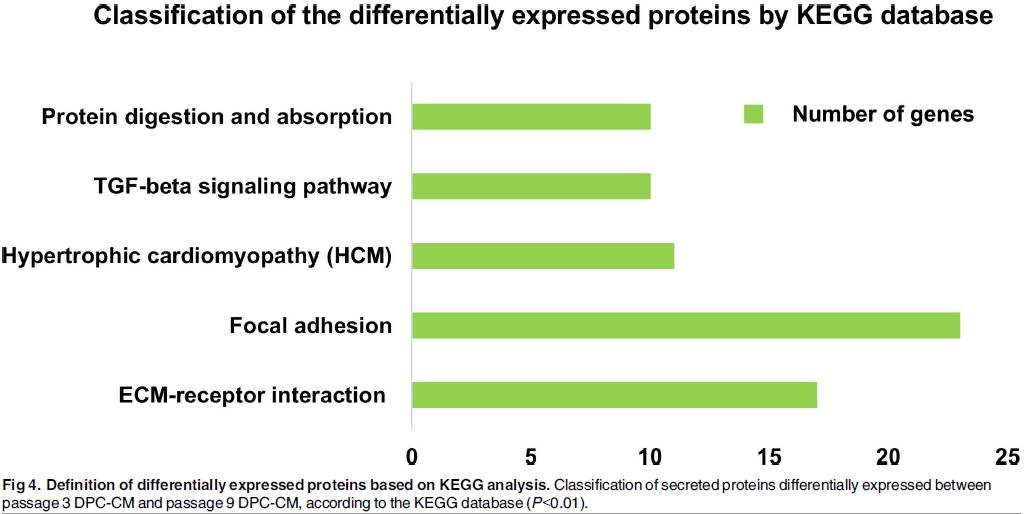
Through GO functional analysis of differential proteins, it was found that the proteins involved in the early secretion of up-regulated proteins in DPC were mainly involved in the following biological processes: single-organism processes (11.07%), cellular processes (10.42%), multicellular organismal processes (7.65%), Metabolic processes (7.49%), biological regulation (7.33%) and response to stimuli (7.0%) (bottom A); proteins secreted by early DPC secretion are mainly involved: cellular processes (9.9%), single-organismprocesses (9.43%) ), biological regulation (8.03%), metabolic processes (7.45%), regulation of biological processes (7.22%), response to stimuli (7.22%) and multicellularorganismal processes (6.64%) (B).
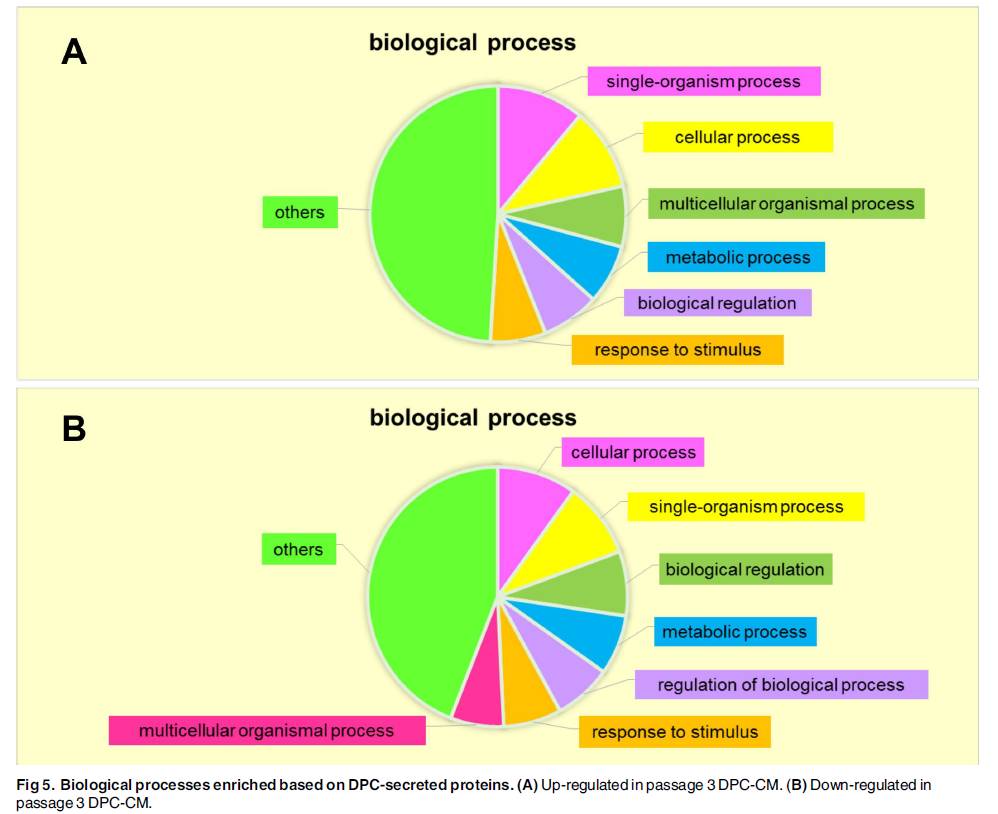
MRM verified the expression of key proteins: 19 proteins were selected from 213 differential proteins for MRM expression, and the expression trends of 19 differential proteins were consistent with iTRAQ results (Table below).
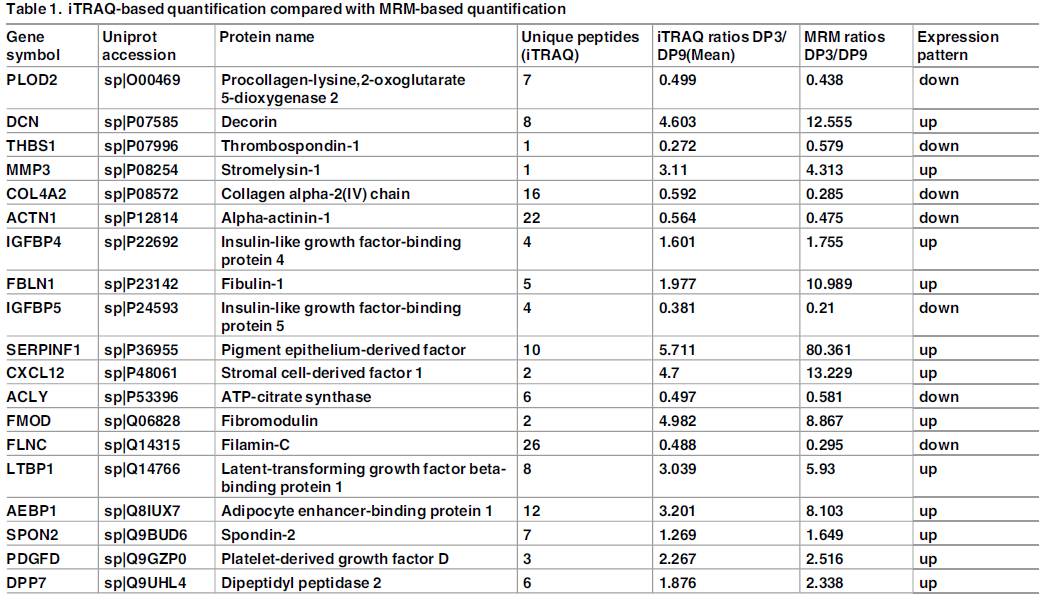
Xiaobian experience
This article uses proteomics research to find key cell secretory proteins that induce hair regeneration. In addition, this is a very high-level literature for the identification of secreted proteins in cells. Refer to the design of this article.
Protein|modification|metabolism|lipid|structural confirmation
T: 021-54665263
E:
Q: 1875681852
Protein Powder,Protein Collagen Powder,Hydrolysed Collagen Protein Peptide Powder,Hydrolyzed Collagen Powder Protein
Hebei Haodong Biological Technology Co.,Ltd. , https://www.hdgelatin.com